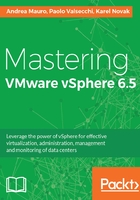
上QQ阅读APP看书,第一时间看更新
Why shouldn't you upgrade?
There can be few reasons to skip the upgrade to vSphere 6.5 which are as follows:
- Is it compatible? You may have a software or hardware part that does not support this version. Note that from the next version of vSphere, several generations of servers will probably no longer be supported (for example, if you install ESXi 6.5 on a Dell 11g, it reports that the next version of ESXi will no longer support that processor).
- Does it support existing servers? vSphere 6.5 drops the support to some old hardware and software. vSphere 6.5 no longer supports the following processors—Intel Xeon 51xx series, Xeon 30xx series, Xeon 32xx series, Xeon 53xx series, Xeon 72xx/73xx series.
- Do you really need the new functions? If you are involved in a digital transformation, you will probably need the new platform (AWS for vSphere or vSphere for integrated containers management require the new version). But for SMBs, most of the new functions are not usable or useful yet.
- Can you really use the new functions? Most of the new features are only for the Enterprise Plus edition (see the next paragraph for more details about the different editions).
- Is it mature and stable enough? As mentioned previously, vSphere 6.5 seems a better code compared to previous version 6.0 (or also 5.1) when it was released in GA. Also, it has already been used in production environments for more than 6 months, with few bugs.